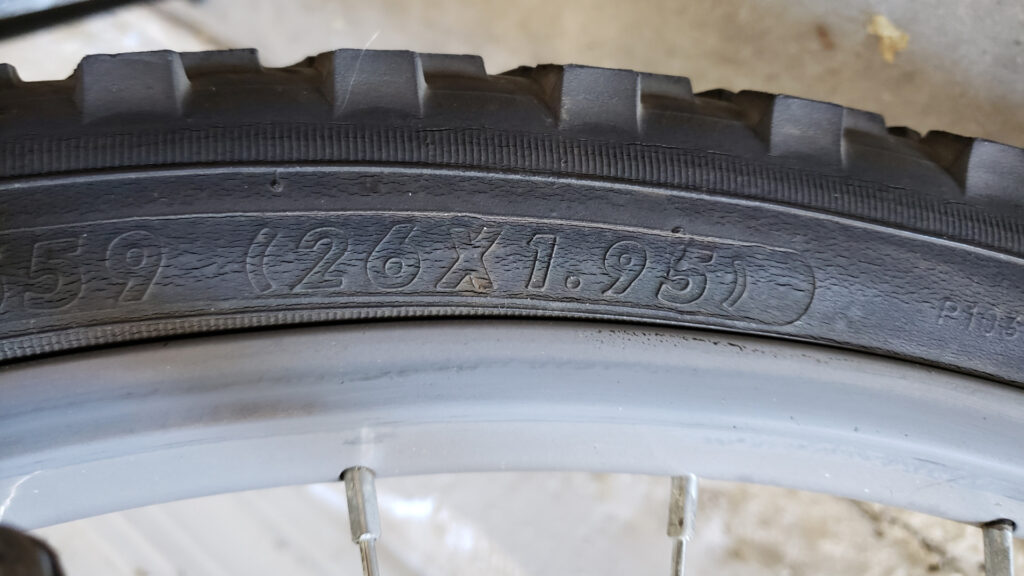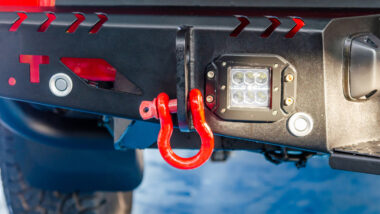Table of Contents Show
Sometimes well-intentioned people give bad advice. Spotting misinformation can be rather tricky, especially when it comes from family. Unfortunately, a fellow traveler experienced this situation recently regarding her RV tires.
Today, we’re looking at this situation and the advice she received. How did she respond, and what can we learn from her encounter?
Let’s get started!
Full-Time RVer Prepares for Stationary Living
We recently saw a post from a fellow RVer preparing to dive into RV life. She and her husband want to live stationary in their trailer while her husband works. If you’ve made this leap, you know how many things you must consider.
With so many things to process, it can get overwhelming. If you’re anything like us, you don’t think clearly when experiencing overwhelming emotions.
The whole process can cause you to need help making decisions. Luckily for this individual, she had a healthy dose of skepticism about some advice she received.
Family Member Offers Inaccurate Advice
Our soon-to-be nomad posed the question to a large Facebook group of full-time RVers. She stated that her brother-in-law instructed her to remove their tires because they would be stationary. She was skeptical about the potential benefits and whether or not it would be helpful in their situation.
The idea behind this thinking is that sitting in one place for so long can be hard on the wheels and cause issues. While the advice has some truth, there are some reasons why you shouldn’t remove your RV tires.
Should You Remove the Tires on a Stationary RV?
It’s true that sitting stationary is not ideal and reduces tire life. The rubber compounds are pliable and are best when exercised regularly. Staying in place for extended periods can weaken the compounds and increase the chances of a tire blowout when you eventually hit the road.
Additionally, exposure to the elements can also cause havoc on the rubber compounds. The harmful UV rays can cause the rubber to dry out and begin to crack. Sitting on dirt and other moist surfaces can also create issues.
Removing your tires could be a viable option. However, it’s a tremendous amount of effort. You must also remember that it’ll make it nearly impossible for you to move your rig quickly. If you ever need to change locations, you must put the wheels back on.

Tips for Protecting Your Tires for Stationary RV Living
While we don’t recommend removing your RV tires when stationary, we have several suggestions for what you should do. Let’s look at how you can protect your wheels while staying put in your rig.
Invest in Tire Covers
Investing in tire covers is one of the easiest ways to protect them. These are relatively inexpensive and easy to use. You can place them over the top, and they’ll keep the harmful UV rays and weather elements off them.
It’s not uncommon to see RVers using these whenever they park, whether at a campsite or in storage. They typically only take a couple of minutes to put on and offer a ton of protection.
Keep in Mind: If you’re still not convinced tire covers are worth it, you need to read this article!
Use Tire Saver Ramps
As we mentioned, having your tires sit on the ground is not great for them. Keep a barrier between them and the earth. Investing in a set of Tire Saver Ramps can be worth every penny.
- ✺ CONCAVE DESIGN - The Zento Deals Tire Saver Ramp has a smart concave design that will prevent your tires from being...
- ✺ HIGH VISIBILITY - The Zento Deals Tire Saver Ramp has a neon yellow color that can be seen easily even at night.
These plastic ramps are lightweight and durable. You drive up onto them, and they keep your tires off the damp ground. You don’t have to worry about moisture or other gunk causing issues.
Rotate Monthly
If you want to avoid issues, you should rotate your tires monthly. This prevents flat spots from developing from not moving. Some have found the easiest way to do this is using the leveling system.
However, it would be irresponsible of us not to mention that this is a dangerous activity. Many leveling system manufacturers do not recommend using their system in this manner. It could void warranties and, even worse, lead to an injury.
When you raise your wheels off the ground, they’re no longer chocked. If the weight of your RV shifts, it could bend your landing gear. You or someone else could get seriously hurt when things don’t go as planned.
Keep an Eye Out for Dry Rot
Dry rot is common in tires that get used infrequently and sit exposed to the sun and other weather elements.
Indications of dry rot typically include cracks, discolorations, bulges, and changes in texture. Constantly inspect your tires. Catching any changes can save you from issues down the road.
Pro Tip: The last thing you want while driving on the highway is tire failure. Learn How to Spot (and Avoid) Dry Rot Tires!

Buy New Tires If You’re Going to Travel Again
If you plan on sitting for an extended period, it’s best to plan to replace your tires. Stationary living is a great way to save a tremendous amount of money. Do yourself a favor and factor a new set of tires into any savings you experience before hitting the road again.
You need to have confidence that your tires can get the job done. If you don’t, spend the money on a set you can. A tire blowout can be incredibly dangerous and cause severe damage to your RV. We’ve seen repair bills in the thousands from a single blown tire.
To Remove or Not to Remove?
Ultimately, the choice is up to you. Removing the wheels could be worth considering if you’re confident your camper won’t go anywhere for the rest of its usable life.
However, it’s not an excellent option for most people who are temporarily stationary. What do you think?
Last update on 2024-07-25 / Affiliate links / Images from Amazon Product Advertising API







